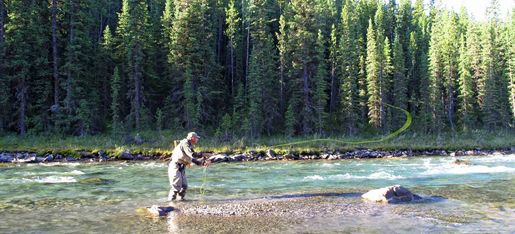My experience with native willows planting and tree planting all began as part of my training and applied science in fish habitat enhancement. Essentially, my interest in planting has been completely focused on creating natural trout habitat restoration!
The use of planted native stock is crucial when your goal is to achieve a natural look in any stream habitat enhancement project. Moreover, employing plants to create trout habitat is the most cost-effective strategy for any fish habitat project that addresses a riparian zone needing restoration or complete rehabilitation.
The photo to the right illustrates how growing willows can function as cover habitats in key areas, providing essential shelter and hiding spots for trout. In recent years, with the recovery of Bighill Creek at its lower end, there has been an increase in fish-eating birds visiting the stream. This makes the available habitat in the water critically important for trout and their survival. Trout require submerged structures that are ideal for evading hungry birds, and submerged branches along with exposed roots can fulfill this need.
Protection from daylight is particularly vital for the dim light-loving brown trout and brook trout. These species have darker body colors to blend in with available habitats or shade; hence, they require such environments, and the willows and trees we plant are significantly aiding this. This is why planting along the water’s edge is essential for the fish habitat enhancement of the stream. In the title: 'Bow Valley Riparian Recovery and Enhancement Program,' the enhancement aspect refers specifically to habitat enhancement. Therefore, we are achieving a comprehensive package of environmental benefits, improved water quality, and enhanced fish and wildlife habitats.
The best way to describe this effort is as Helping improve the health of our trout streams! This initiative is unfolding at a grassroots level, with support from the Department of Fisheries and Oceans, local government, the community, and local businesses that share the objectives outlined in the original proposal. It creates a win-win scenario for the trout streams and the natural world, ultimately addressing the challenges posed by climate change.


